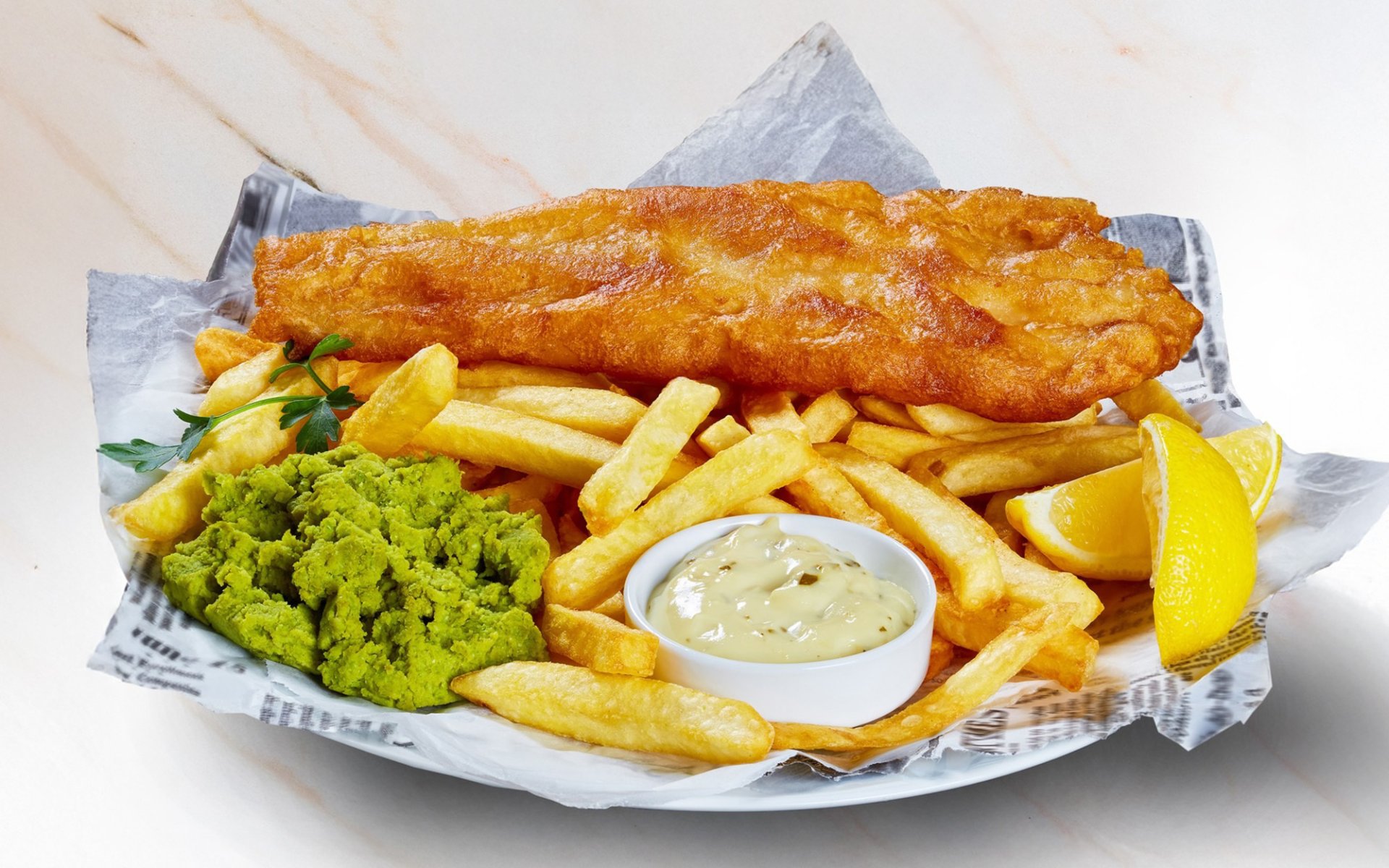Fish & Chips

Simple, yet valuable. This phrase perfectly suits the classic dish Fish & Chips. To become the national food of England, Fish & Chips has traveled through many eras, even before World War I.
Before becoming the Fish & Chips we know today, fried fish and fried potatoes were two separate dishes. Therefore, Fish & Chips have different origins before coming together as a single dish in the late 18th century.
The Genesis of Fried Fish and Its Spread in England
Battered fried fish is said to have originated from the cooking techniques of Jewish immigrants from Spain and Portugal who settled in England during the 17th century. This cooking method was originally known as Pescado frito. Over time, this way of frying fish became deeply rooted in English culture, leading to its increased sale at street stalls.
Especially as England entered the Industrial Revolution (1760 1850), fried fish became increasingly popular among the working class because it was easy to find and inexpensive. However, at that time, it was usually served with baked potatoes or bread, not the fried chips we know today. Street stalls selling fried fish in this manner were even mentioned in Charles Dickens' novel Oliver Twist (1839). This is significant evidence of the profound influence fried fish had on English food culture.
The Unification of Fish & Chips: The First Shop and Evolving Formats
It wasn't until 1860 that the first Fish & Chips shop, opened by Joseph Malin, a Jewish immigrant, began selling fried fish and chips together in the East End of London. His dish was highly successful, but his shop primarily offered takeout, with no space for customers to dine in, as most shops back then operated by opening doors and windows on the side of their homes.
Later, in 1896, a man named Samuel Isaacs revolutionized the way Fish & Chips were consumed. He opened a Fish & Chips shop where customers could sit and eat. He also served it with inexpensive bread, butter, and tea, making it accessible even to the working class. This led to his shop's rapid popularity and expansion. From then on, numerous Fish & Chips shops, big and small, began opening across England, each developing its own recipes and serving the dish with various sauces such as tartar sauce, vinegar, and many others.
The most popular fish varieties used for Fish & Chips are Cod, Haddock, or Pollock, each offering different textures and flavors, depending on the shop's recipe. In Thailand, seabass or Dolly fish are commonly used, as they are easily available locally and have a taste closest to the original fish.
A Vital Role in World Wars: Becoming a National Dish
During World War I, Fish & Chips was one of the few foods that was not rationed and could be widely purchased. Thus, Fish & Chips became a meal that kept the English people fed and boosted their morale during the war. It could truly be called the Comfort Food of the English. But the popularity of Fish & Chips didn't stop there; during World War II, this classic dish remained as popular as ever, eventually becoming the national dish of England.
Fish & Chips Today: Simplicity That Conquers the World
Today, the popularity of Fish & Chips continues to grow. Especially in the 20th century, there were over 25,000 Fish & Chips shops in the United Kingdom. Although it is a very simple dish, it is precisely this simplicity that has made "Fish & Chips" England's national dish, beloved worldwide.
The traditional English Fish & Chips often came wrapped in newspaper. This practice was originally a cost-saving measure, as using newspaper was economical. However, it was later discovered that chemicals from printing ink could contaminate the food, leading to the eventual shift to plain paper.


